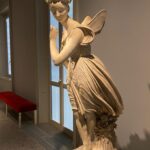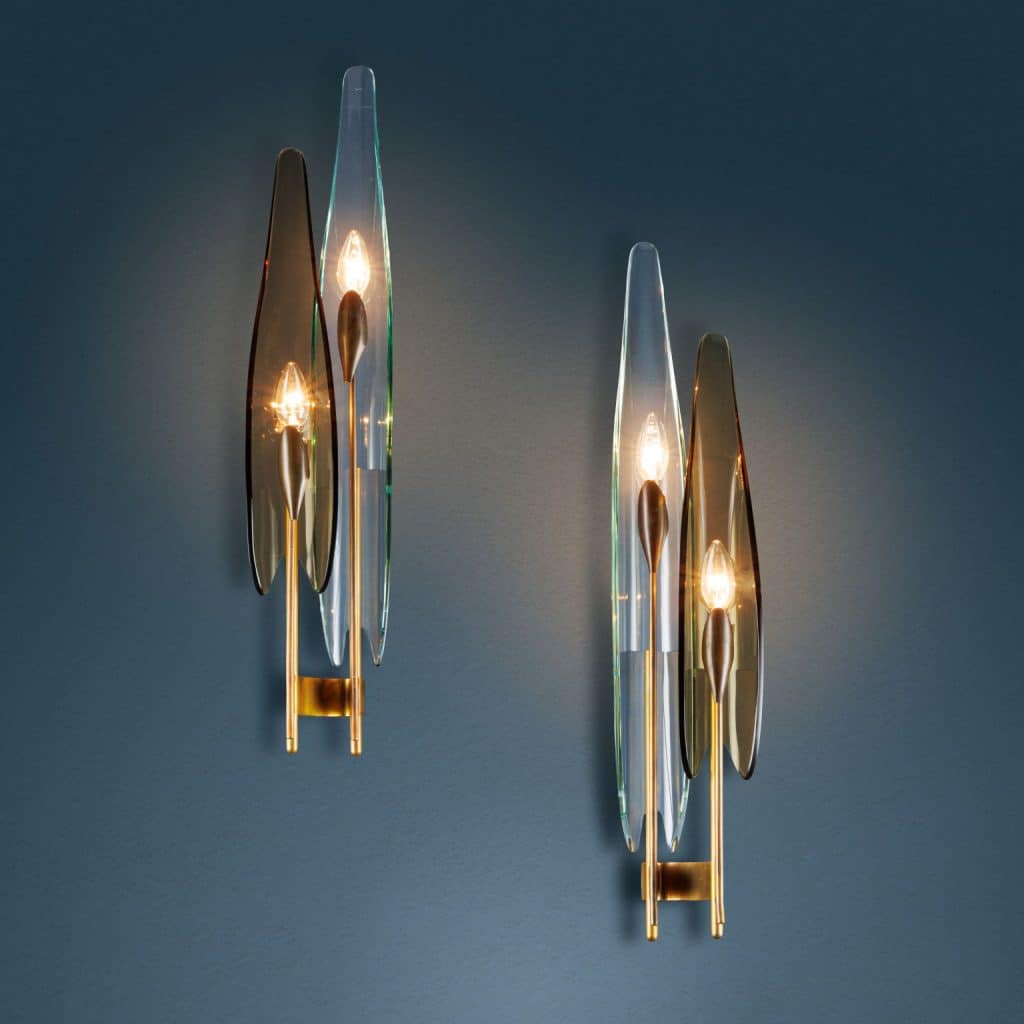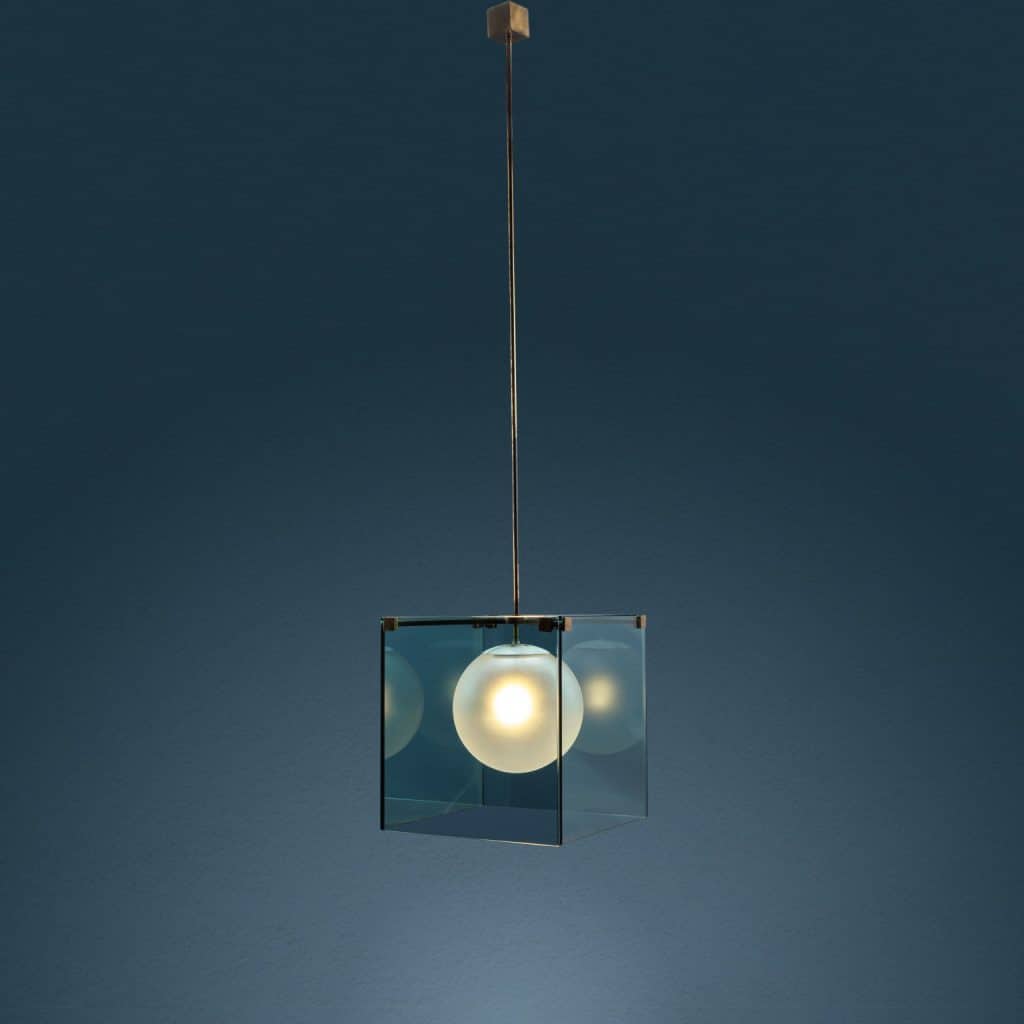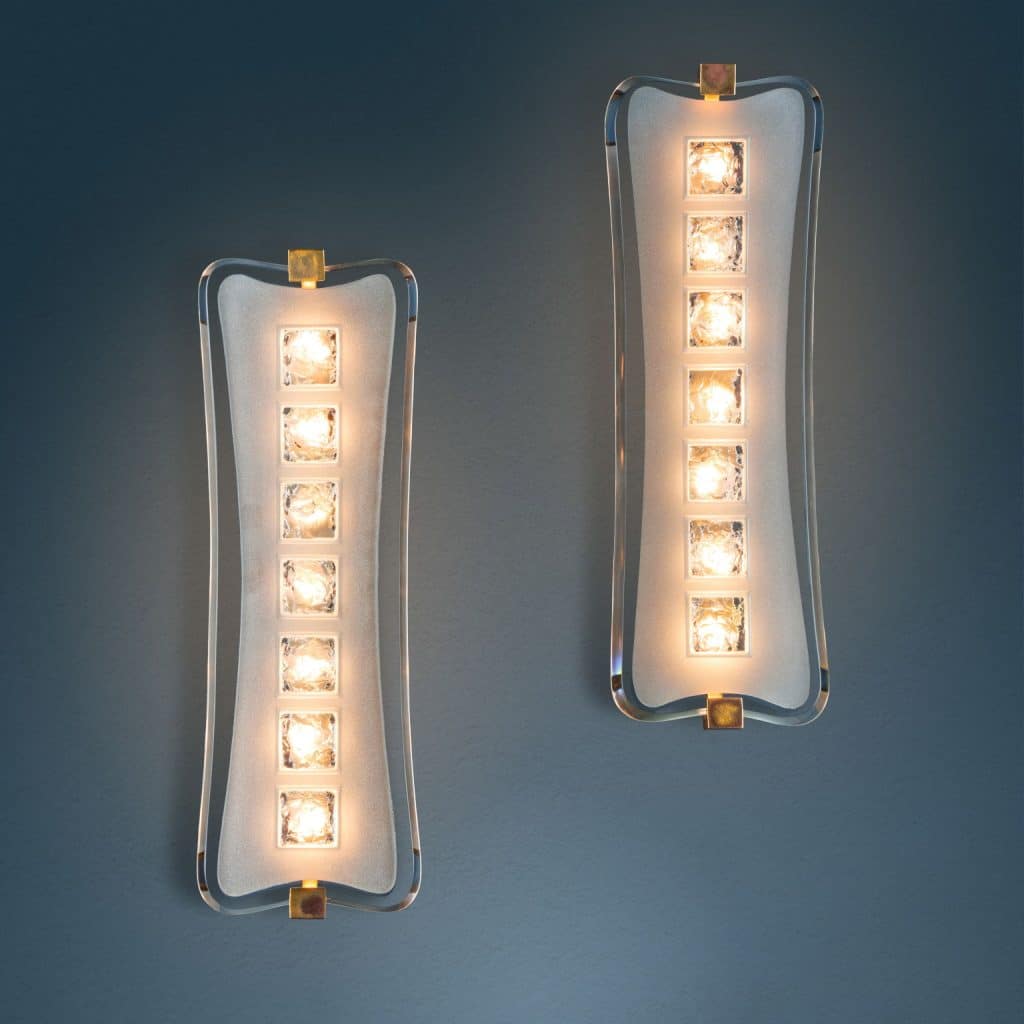Italian Enlightenment
The Italian Illuminism event takes place from 21 October to 19 November, presenting selected products that are an expression of Made in Italy light design.
An exhibition entirely dedicated to lighting that is located in the exhibition spaces of Cambiago, with examples of Italian production, from the 1940s to the 1970s.
The undisputed protagonists are the pieces produced by Fontana Arte, one of the most important historic Italian companies dedicated to lighting and beyond, in particular those created during the fortunate period when the company was directed by Max Ingrand. The French designer, specialized in the creation and decoration of stained glass windows, was in fact able to give a boost to Fontana Arte, following a period of stagnation also due to the difficult period of war and the period immediately following.
His artistic direction followed that of illustrious predecessors such as Gio Ponti first and then Pietro Chiesa who, together with Luigi Fontana, had founded and increased the company’s fame and appreciation.
It was Ponti himself who suggested the name of the Frenchman, whom he had been keeping an eye on for several years in his activity as a glassmaker and decorator, so much so that already in March 1936 he had dedicated an article, in his magazine “Domus” no less, to stained glass windows created together with his first wife Paule Rouquie.
In particular, Ponti praised his continuous research from a technical point of view, expertly mixed with refinement and accuracy in taste and creation. It therefore seems like a natural choice that Ponti made in the 1950s when, called by the top management of Saint-Gobain (the majority shareholder of Fontana since 1910, when it was still called Luigi Fontana & Compagni) to manage the company again, he made instead the name of Max Ingrand.
Ingrand’s ability, perfectly and lucidly already intuited by Ponti, was precisely that of acting as a continuer of the legacy left by Chiesa, with production choices that on the one hand maintained the characteristics of quality and refinement that distinguished Fontana Arte, together with a capacity for innovation capable of incorporating the new taste and, therefore, the market.
His working method is interesting, according to which he sketched out quick sketches, taking care of the aesthetic aspect and highlighting the few details he wanted to emphasise, then leaving the task of creating the executive drawing to the designers. This method, moreover, was the one already adopted by Chiesa and had proved successful, managing to create a team of collaborators capable of working independently and, certainly, motivated.
The Fontana Arte catalog of these years shows a great evolution, both in the typology of the pieces and in the materials and style.
The lighting sector was certainly the most increased, becoming particularly characteristic of Ingrand’s style, an expression of the luxurious furnishings of bourgeois homes of the 1950s and 1960s.
Max Ingrand’s lights for Fontana Arte are characterized by innovative models, with shapes played with the numerous possibilities allowed by glass processing. They are all characterized by the skilful workmanship of glass and crystals, combined with metals such as brass and aluminium, thus playing with transparencies, shapes and colours.
Curved glass sheets, shiny surfaces alternating with etched sections, contrasting shapes, these are some of the characteristics of the lights designed by Ingrand.
The famous Dahlia, a series created with the use of curved glass sheets, an effect recreated since the 1930s, thanks to the use of a special oven unique in Italy, are proposed in our exhibition with wall lamps with elegant and refined elongated shapes. The contrast between satin surfaces with a matt finish and ground and polished parts is appreciable in examples such as the “2093” or “1944” wall lamps and the rare “”1568”. Ingrand plays with shapes in the “2073” and “2211” lamps , where he inscribes sphere and cylinder respectively in a cube and in a parallelepiped, playing with the contrasts generated by straight and curved lines.
One of the most notable and uncommon examples is the “1452” lamp in polished brass with colored, shaped and ground crystal discs.
However, from the correspondence between Ingrand and Ponti it emerges that the French designer was always attentive first and foremost to the functionality of the object and the technical imperatives whose creation presented it.
The exhibition proposed by Fine Art by Di Mano in Mano is a fortunate opportunity to present a selection of lights created by Max Ingrand for Fontana Arte, also accompanied by other examples of lighting, certainly fundamental for the history of Italian design.
Comparative bibliography: Franco Deboni, Fontana Arte. Gio Ponti, Pietro Chiesa, Max Ingrand, Umberto Allemandi C., Turin, 2012.








